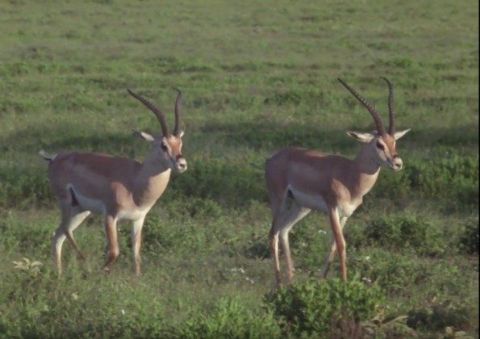Trials of Life • 1990 • 13 episodes • 10h:31m
Originally broadcast in 1990, Trials of Life is still one of the most comprehensive wildlife documentaries ever made. It examines animal behaviour in all its infinite variety and in doing so we are allowed to witness some of the most enchanting animal personalities, as well as some of the most fearsome. Leaving parents, searching for food, building a home, finding a mate; each day brings a new test, a challenge for even the fittest and best adapted animal. Taking some three and a half years to make, Sir David Attenborough travelled almost a quarter of a million miles to complete this fascinating and insightful documentary.
For animals, there is no greater challenge than surviving the vulnerable first years of life. This episode demonstrates that nature's solutions are as varied as those in human society.
2/12 • 1990 • Nature
The search for food in the animal world. With leaves defended by poisons and seeds clad in thorns, animals fight back in very innovative ways.
3/12 • 1990 • Nature
Life-and-death duels are fought daily in the wild: an orchid turns out to be a predator, killer whales ambush sea lions and chimps pursue colobus monkeys.
4/12 • 1990 • Nature
How animals ranging from albatrosses to ants can navigate themselves over long distances.
5/12 • 1990 • Nature
How all animal architects aim to keep both the elements and intruders at bay through features that include defensive moats.
6/12 • 1990 • Nature
Examining some of the weird relationships that develop between species, from birds that relieve clients of hangers-on to hermit crabs that enlist stinging anemones to repel octopuses.
7/12 • 1990 • Nature
From vampire bats to baboons, Sir David Attenborough investigates the importance of recognising friends and respecting the power of rivals throughout the animal kingdom.
9/12 • 1990 • Nature
From the love songs of fish to the flashes of millions of tiny beetles, Sir David Attenborough examines methods of communication used by animals.
10/12 • 1990 • Nature
A look at the many and varied ways in which animals procreate in order to ensure that their genes are passed on to the next generation.
12/12 • 1990 • Nature
The inside of a termite mound proved especially challenging for Attenborough: it was so cramped that he could only face in one direction. He therefore had to slowly crawl backwards out of shot when performing re-takes.
special • 1990 • Nature












